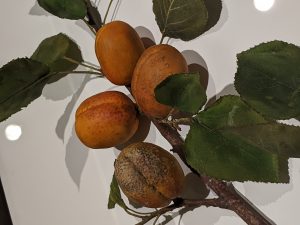
by Alex Howard
“The North Nashville Heritage Project taught me that the old lady who fried chicken at the church was just as important as the lawyers who bailed the students who got arrested out of jail,” said Dr. Learotha …

Featuring profiles of outreach & advocacy in cultural heritage

by Alex Howard
“The North Nashville Heritage Project taught me that the old lady who fried chicken at the church was just as important as the lawyers who bailed the students who got arrested out of jail,” said Dr. Learotha …
by Vanessa Formato
 All these fruits are dying. Wisps of grey mold stretch out from the bottom of a sickly, shriveled strawberry. Plums blush an unnatural shade of teal. A pockmarked peach hangs from a branch, the bark discolored, its …
All these fruits are dying. Wisps of grey mold stretch out from the bottom of a sickly, shriveled strawberry. Plums blush an unnatural shade of teal. A pockmarked peach hangs from a branch, the bark discolored, its …
by Mattie Clear
The Historic Congressional Cemetery has gone to the dogs, in all the best ways. Before the wonders of the Washingtonians and their ingenuity can be appreciated, one must know the story of this small, but important cemetery. …
by Jonathan Fryerwood
The RAINBOW ARCADE exhibition hosted at the Schwules Museum in Berlin presented itself as the first major exhibition of queer content in video games. The event ran from December 2018 to May of this year. The project …